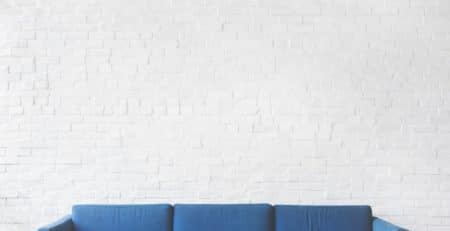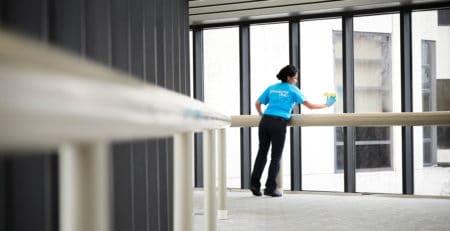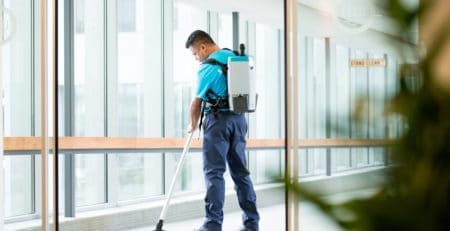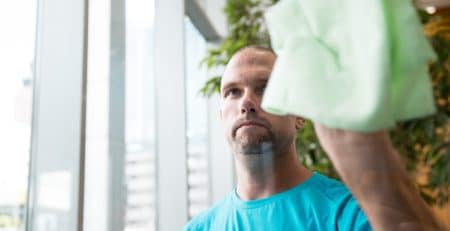How to Protect All Flooring from Sunlight
As a property or facility manager, keeping your building’s appearance in pristine condition is an important endeavor. Floors are a major investment, and in warmer weather when sunshine is abundant, flooring can go through wear and tear. Learn how to protect all flooring from sunlight with these tips from ServiceMaster OneCall®.
Preventative and maintenance tips for all flooring
No matter what type of flooring you have, your floors are at greater risk of damage during the summertime because of stronger UV rays. However, sun damage isn’t the only risk your floors are subjected to on a regular basis. Here are some simple steps you can take to prevent damage and keep all types of flooring properly maintained:
Limit direct sun exposure
Use blinds and curtains to prevent too much direct UV exposure. Not only will blinds and curtains protect your floors from fading or becoming discolored, but they could also help your air conditioner run more efficiently.
Use doormats
Place doormats near entrances to help reduce your flooring’s exposure to direct sunlight. Doormats can also help to reduce the tracking of mud, grime and dirt throughout your facility, further protecting your investment. When placing your doormats at entrances, make sure they are securely positioned to help reduce the risk of slips and falls.
Monitor humidity levels
Too much or too little humidity can cause major damage to your flooring. During warmer weather, humidity levels can spike. The recommended humidity level range from most flooring manufacturers is between 35 and 55 percent. If necessary, invest in a dehumidifier to maintain proper humidity levels.
Tips to protecting specific flooring from sunlight
Since all types of floors are different, each is subject to its own set of risks. Along with using the above tips for all flooring, use these preventative tips to keep your specific flooring types in excellent condition when the sun is shining:
How to protect vinyl floors from sun damage
In vinyl flooring, excessive heat can cause the floorboards to weaken. Too much UV exposure could significantly fade the flooring material, too. Prevent issues like cupping, curling, peaking and buckling by maintaining the proper climate for your flooring. Keep temperatures between 60 and 85 degrees Fahrenheit year-round to help ensure that your vinyl stays in good shape.
How to protect carpets from sun damage
The sun’s damaging rays can have a bleaching effect on carpets. While drawing the shades might be the best way to prevent carpet discoloration, there are other ways to protect your carpets against sun damage:
- Use a carpet treatment that includes UV protection. Before applying treatment, test an inconspicuous area of your carpet to ensure discoloration or staining doesn’t occur.
- Consider investing in a UV-resistant type of carpet.
- Apply window film that blocks UV rays but still allows plenty of light to come inside.
How to protect hardwood floors from sun damage
Hardwood flooring may absorb excess moisture during hot and humid weather that could eventually lead to buckling or cupping. Protect hardwood floors from heat damage by creating a climate-controlled environment that doesn’t exceed 80 degrees Fahrenheit. Humidity levels shouldn’t exceed 50 percent year-round. Prevent as must direct exposure to sunlight to reduce the likelihood of sun damage, too.
More tips from ServiceMaster OneCall
Finally, for the ultimate clean for your floors, contact ServiceMaster OneCall. Our commercial hard surface floor cleaning services are designed to extend the life of your floors and make your business shine.






Comments (2)
Thankful for sharing this useful post!
Thanks for sharing!
These tips look reasonable, will take note.
Kindly regards,
Ira